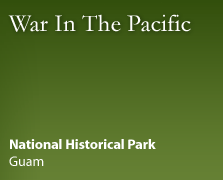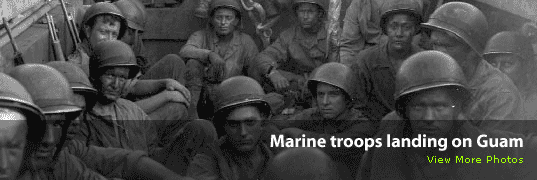|
The sites of the massacres of US Nationals on Guam represents some of the places within current U.S. jurisdiction where civilians were so directly affected by the hostile acts of the Japanese during the war. As such, these sites should be considered as having a national level of significance as well as the obvious significance at the local and “state” levels.
The island of Guam remained under hostile occupation from December 10, 1941 through August 10th, 1944 when the island was declared secure. In this period the people of Guam were forced to endure numerous hardships, many of which, it seemed to the people, did not have any bearing on the war effort.
As the tide of war turned against the Japanese, their once impregnable defensive perimeter began to inexorably recede. Guam, once considered as a safe zone for the Japanese, now became the front line. As the summer of 1944 moved closer, preparations for the inevitable American invasion continued at an even more frantic pace.
Lacking the machine and materials necessary for the construction of defensive positions, the work became increasingly labor intensive. That is the Japanese forced the local population into building the fortifications that would protect them from their liberators.
At that time, although Guam had been an American possession for over forty years, its people were not American citizens and as such were not protected by the Constitution. Nevertheless, the Guamanian people were quite patriotic and placed great faith in the United States.
During the occupation the Japanese had tried to eradicate any and all vestiges of Western Culture on the island. Japanese language and culture were the rule and sought to define the newly renamed island of Omiya Jima. Any sympathy or inclination toward America, whether real or perceived, was dealt with quickly and severely.
While punishments were dealt out by the Japanese for perceived violations of the law, some attacks upon the Guamanians appear to be senseless and random. Yet, there is the appearance that the massacres seem to represent a Japanese plan to kill as many of the local population as possible before the American invasion.
As mentioned, there were many instances of brutal attacks on the local people. But certainly the most notorious in terms of numbers and public recollection, were the massacres of 46 men and women at Tinta on July 15, 1944 and Faha on July 16, 1944.
Text courtesy of Guam Historic Preservation Office |





